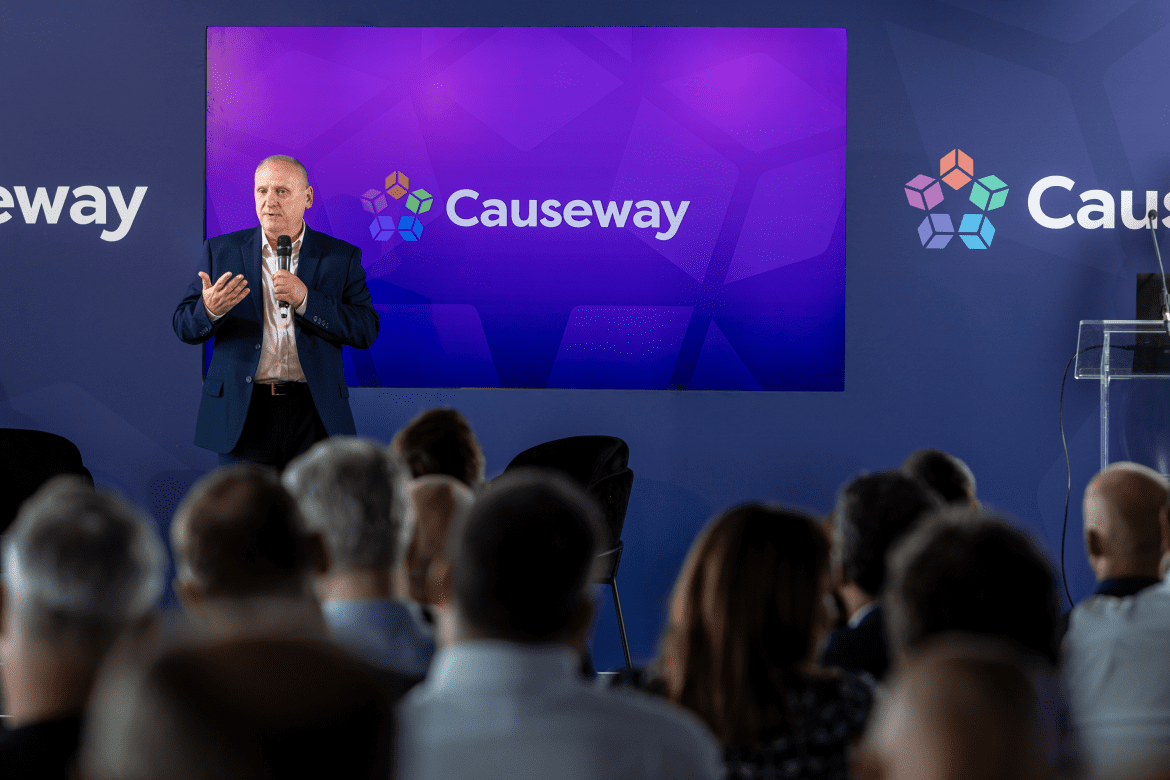The scale of the workforce shortage
Britain's utilities face a generational challenge: with just 4.5 years left to deliver the Clean Power Strategy and AMP8 infrastructure goals, the sector needs more than 300,000 additional workers. The biggest recruitment drive in 75 years.
But here's the uncomfortable truth: we should have started training them two years ago.
In our recent webinar, Mark Farmer, the UK’s leading expert on built environment skills, government advisor and author of Modernise or Die, delivered a sobering assessment.
Demand is soaring. Skills are short. It’s time to act.
The UK construction workforce has shrunk from 2.6 million in 2008 to just 2 million today. At the same time, the utilities sector is gearing up for £300 billion of investment. This is a line in the sand. Rising demand meets a shrinking supply of skilled workers. There is an opportunity here though, to build smarter, work faster, and attract new talent into a vital industry.
"We're not just behind the curve," Farmer warned. "We're already in arrears."
The blind spot that could derail everything
This isn’t just about numbers however, it's about visibility. During the webinar, live polling revealed a sector flying blind:
- Most organisations can't identify which workers will retire in the next five years
- Real-time certification data exists only in "pockets"
- Strategic workforce planning relies on hope rather than hard intelligence
"Many companies simply don't know what they've got," Farmer observed. "And what they don't know, they can't plan for."
For senior leaders, this is a strategic risk that threatens regulatory compliance, project delivery, and ultimately, shareholder value.
Why utilities must prioritise strategic workforce planning
Farmer's prescription goes beyond traditional recruitment. The sector needs whole workforce thinking:
- Accelerate new talent absorption
The industry must compress traditional training timelines while maintaining quality standards. This means systematic skills development, not ad-hoc apprenticeships.
- Maximise existing workforce output
With a demographic "bow wave" of retirements approaching, extracting higher productivity from current workers is essential for survival.
- Deploy strategic workforce planning
"Strategic workforce planning is supply-and-demand matching," Farmer explained. "Start with transparent demand, quantify current versus required roles, run gap analysis, then act. Digital enablement is the only practical way to manage that at scale."
Digital skills passports: from compliance tool to strategic asset
Digital skills passports—already operational at Thames and South West Water—represent more than workforce tracking. They're strategic skills infrastructure for the modern utility:
Real-time workforce intelligence
- Live visibility of skills, certifications, and expiry dates across the entire supply chain
- Behaviour tracking alongside technical competence (skills + knowledge + experience + behaviour)
- Predictive analytics for workforce planning and risk management
Competitive Advantage Through Quality
"Corporate competence flows from individual competence," Farmer emphasised. In an era of increased regulatory scrutiny, proving workforce capability is a competitive differentiator and an essential way to ensure delivery targets get met.
AI-powered planning
At national scale, AI analytics can identify future shortages, direct recruitment to geographic "hot-spots," and optimise training deployment. This technology isn’t years away, instead it's available technology waiting for sector leadership to seize hold of the opportunity it represents.
The procurement revolution utilities can't avoid
One of the webinar's strongest themes came from the audience: SMEs in the supply chain are drowning in compliance costs while being squeezed on prices. Farmer's response was uncompromising:
"Clients must budget for human capital costs exactly as they budget for concrete and steel"
This means:
- Balanced scorecards that weight workforce outcomes alongside price
- Early visibility of project pipelines to enable supply chain investment
- Recognition that "lowest price" procurement destroys the very capacity needed to deliver
"If we don't fund competence properly," Farmer warned, "we'll repeat the race-to-the-bottom and end up paying more through defects and delays."
Collaboration or cannibalisation: the choice is clear
With 60% of webinar participants agreeing that sector-wide passports are mission-critical, the case for collaboration is building. But time is the enemy.
Farmer pointed to Network Rail Sentinel and Highways Passport, where competing companies unified around shared workforce platforms. "Thames and Southwest Water already use the utilities passport. That should be the foundation, not a bespoke solution for each company. Fragmentation wastes time we don't have."
The alternative? Regional utilities cannibalising each other's mobile workforce. That is in no one's long-term interests.
The window is closing
Farmer's final message was stark: "Client-side collaboration, intelligent procurement, and a national digital passport are mission-critical. Delay and we miss 2030, or hit it at the expense of quality and cost."
The utilities sector stands at an inflection point. Leaders can either invest in workforce visibility now - gaining competitive advantage, regulatory confidence, and delivery assurance - or continue flying blind into the most challenging period in the sector's history.
The entire webinar is full of valuable insights like these. You don't want to miss out.
From workforce blind spots to practical steps on digital enablement, Mark Farmer shares what the sector urgently needs to hear.



